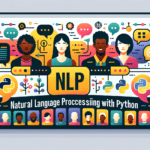In present times, understanding blockchain technology has become increasingly important. Blockchain stands out as a revolutionary concept, offering decentralization, transparency, and immutability in data management. In this article, we’ll delve into the fundamentals of blockchain technology, exploring its components, workings, and real-world applications.
What is Blockchain Technology?
Definition and Concept
At its core, blockchain technology is a decentralized, distributed ledger that records transactions across a network of computers. Blockchain distributes data across multiple nodes, ensuring transparency and security, in contrast to traditional centralized systems that store data in a single location.
Key Components of the Blockchain
The blockchain comprises three key components: blocks, transactions, and consensus mechanisms. Blocks link together to form a chain, containing transaction data. Transactions represent data exchanges recorded on the blockchain. Consensus mechanisms ensure agreement among network participants on the validity of transactions.
Explaining Blockchain
“Blockchain for Dummies” describes the concept of blockchain as a method of storing transaction data in linked blocks. As transactions increase, so does the blockchain, with each block recording and confirming the time and sequence of transactions. Participants in a discrete network govern this process through agreed-upon rules.
Every block comprises distinct elements, such as a hash (a digital fingerprint or unique identifier), batches of recent valid transactions with timestamps, and the hash of the preceding block. The previous block hash serves to link the blocks together and prevent any alteration or insertion between existing blocks. This methodology theoretically renders the blockchain tamperproof.
The underlying principles of blockchain revolve around four key concepts:
- Shared Ledger: A shared ledger is an “append-only” distributed system of records shared across a business network. It eliminates the duplication of effort common in traditional business networks by recording transactions only once.
- Permissions: Permissions ensure that transactions are secure, authenticated, and verifiable. By controlling network participation, organizations can more easily comply with data protection regulations such as HIPAA and GDPR.
- Smart Contracts: These are agreements or sets of rules governing business transactions. The blockchain stores them and automatically executes them as part of a transaction.
- Consensus: Consensus involves all parties agreeing to the network-verified transaction. Blockchains employ various consensus mechanisms, including proof of stake, multisignature, and PBFT (practical Byzantine fault tolerance).
Within each blockchain network, there are several participants fulfilling different roles:
- Blockchain Users: Business users with permissions to join the blockchain network and conduct transactions with other participants.
- Regulators: users with special permissions overseeing transactions within the network.
- Blockchain Network Operators: Individuals with authority to define, create, manage, and monitor the blockchain network.
- Certificate Authorities: Individuals responsible for issuing and managing the certificates needed to operate a permissioned blockchain.
How does Blockchain Technology Work?
A blockchain’s data structure
The data structure of a blockchain consists of linked blocks, each containing a set of transactions. Each block references the previous block, creating a chronological chain of transactions.
Decentralization in blockchain
Decentralization is a fundamental feature of blockchain technology. It eliminates the need for a central authority, ensuring no single point of control or failure. Instead, blockchain operates on a peer-to-peer network, where every participant has a copy of the entire blockchain.
A Blockchain Transaction Process
Transactions on a blockchain follow a specific process. Users initiate transactions, network participants (miners or validators) verify them, and consensus mechanisms add them to the blockchain. Once recorded, transactions are irreversible, contributing to the immutability of the blockchain.
Consensus Mechanisms
Consensus mechanisms are protocols used to achieve agreement on the validity of transactions. Popular mechanisms include proof of work (PoW) and proof of stake (PoS). PoW relies on computational power to validate transactions, while PoS relies on participants’ stake in the network.
Blockchain’s security features
Blockchain technology offers robust security features. Cryptographic techniques like hashing and digital signatures secure transactions. Once recorded, the data on the blockchain is tamper-proof, ensuring its integrity.
Immutability and transparency
Immutability refers to the inability to alter data once it’s recorded on the blockchain. This feature ensures data integrity and builds trust among participants. Transparency is inherent in blockchain networks, as anyone can view transaction history and verify data.
Real-World Applications of Blockchain Technology
Cryptocurrencies and digital assets
Blockchain technology powers cryptocurrencies like Bitcoin and Ethereum. These digital assets enable secure and transparent peer-to-peer transactions, revolutionizing the financial landscape.
Supply chain management
Blockchain is transforming supply chain management by enabling end-to-end traceability and transparency. With blockchain, stakeholders can track the journey of products from manufacturer to consumer, reducing fraud and improving efficiency.
Smart Contracts
Smart contracts are self-executing contracts with predefined conditions written in code. They automate contractual agreements and eliminate the need for intermediaries, reducing costs and improving efficiency. Smart contracts find applications in various industries, including finance, real estate, and insurance.
Identity Management
Blockchain technology offers secure and decentralized identity management solutions. Self-sovereign identity allows individuals to control their digital identities, enhancing privacy and security.
Conclusion
Blockchain technology is reshaping industries and revolutionizing data management. Its decentralized, transparent, and immutable nature offers unparalleled security and efficiency. As we continue to explore the potential of blockchain, it’s essential to understand its fundamentals and real-world applications. By embracing blockchain technology, we can unlock new possibilities and drive innovation across diverse sectors.




